Now Reading: Top 10 Best Places Visit in Vijayanagara – Temples, Ruins & Scenic Wonders
-
01
Top 10 Best Places Visit in Vijayanagara – Temples, Ruins & Scenic Wonders

Top 10 Best Places Visit in Vijayanagara – Temples, Ruins & Scenic Wonders
1.ANKASAMUDRA BIRD SANCTUARY

Ankasamudra village exists within Hagari Bommanahalli taluk with an approximate distance of 30 kilometers from Hosapete at its core. The village preserves both historical significance and natural wonders. An enduring 244-acre lake from the Vijayanagara era extends east of the peaceful village to become an active and unusual bird sanctuary across the Kalyana Karnataka region.
Ankasamudra’s lake obtained its new lease of life after Tungabhadra river water was included as a source of water. The infusion of Tungabhadra river water into Ankasamudra enriched its lakeside ecosystem making it provide food for both nature and wildlife throughout the year. Karijali trees together with dense shrubs and aquatic plants create a protected area surrounding Ankasamudra Lake which serves birds particularly during their most important breeding period.
When winter arrives Ankasamudra turns into an active bird sanctuary. Sunday lake provides sanctuary to more than 35,000 birds coming from worldwide locations which led scientists to record 240 different bird species there thus attracting both birdwatchers and nature enthusiasts.
The government declared Ankasamudra as a bird conservation reserve during 2017 thus fulfilling an essential function for birds during their migratory journeys and breeding seasons.
2.MALLIKARJUNA TEMPLE

One of the well preserved ones built during the Kalyana Chalukya period is the Mallikarjuna Temple at Kuruvatti erected in 1087. This temple is renowned for its beautifully carved intricate and the building is consisting of a garbhagriha (sanctum sanctorum), antarala (vestibule), navaranga (main hall), mukhamantapa (entrance porch), and nandimandapam (Nandi pavilion). The sanctum enshrines a smooth black stone Shivalinga.
A five carved branches are found at the entrance door of the sanctum, named as Vajrakriti, Nagabandha PurnaKumbha, Mithuna and Huballi branches. An imposing relief of Gajalakshmi is found on the entrance door. In the open court in front of the sanctum a tastefully carved swag, held by two pillars, shows the divine trinity of Brahma, Vishnu and Maheshwara in equal postures along with Chamardhari on either side.
The navaranga has four exquisite pillars with square bases each having shrinkha above that is adopted from Rekha Nagar style. The pillars under which a series of sculptures of Brahma, Vishnu, Shiva, Surya, Kali, Saraswati and Ganga can be seen are also worth mentioning. The Navaranga has entrances on the east, north and south of the рдатково with the main eastern entrance accompanied by sculptures of female figures of Aregamba with different motifs. Carvings on the pillars of the porch are intricate while another intricate addition to the beauty of the temple are sculptures of madanikas (graceful female figures).
Historical Significance
- Kuruvatti accounted to 22 inscription furnishing historical record to the temple deity by various names: Chalukya Mallesvara (1087), Abhinava Somesvara (1099), Ahavamallesvara (1104) and Mallikarjuna (16th century). One of the sculptures on the temple include panels of devotees with Anjali mudra (hands placed together in front of the chest) that are supposed to be the first Somesvara and his consort.
3.MARULASIDDHESHWAR TEMPLE-UJJINI

Ujjini is famous for its ancient Marulasiddheshwar Temple, also referred to as Saddharma Simhasana Peetha (Marulasiddha Matt) one of the Panchapeetas. This Matt is called as Ujjini Math. The significance of the temple is connotes from its ornamental beauty of art and architecture, particularly the fancy sculptures entrapped inside the temple. The skill displayed by Bhuvaneswari is celebrated by a saying: “See Hampi outside, Ujjini the inside see.”
Historical Significance and Architecture
- The temple is dated back to Kalyana Chalukya period but was expanded and renovated through contributions from the rulers of Devagiri Yadavas, Vijayanagara kings, and Paleyagaras. The north-facing temple features in it the main sanctum sanctorum, antarala, sabhamantapa, mahamantapa, mahadwara gopuram, and additional recently built structures like Annasantharpana Mandir and Matt.
- At the core of the sanctum sanctorum of a black stone Shiva Linga is present. Entrance is enriched with ornaments like holly, scrolls, pilasters, branches of lion, with picture of Gajalaksmi at the center. The Bhuvaneswari of Antarala is the best carved part of the temple and securing Ujjini the epithet of artistic repute.
- The sabhamantapa which is having ten column and four small sancuttam and also having some good & carved mural depicting keertis of Lord Vishnu. These enshrine Veerabhadra, Venugopala, and Shaiva sculptures. In addition to this there are sculptures of Ganesha, Vishvaradhya, Maleswamy, Marularadhya, Siddharama, Ekorama, Jakanachari, Bhaktabhushana, and Papavimochana in the kudu-style moulds.
- Over the sanctum sanctorum is a Vesara-type camp of the four species, the peak decoration is, however, not traceable because of the Annual oil abhisheka ritual. Their in front of temple is placed a very big Nandi statue.
4.MYLARALINGESHWAR TEMPLE-MYLARA

Mylara is one of the famous religious place in the Vijayanagara district of Karnataka. Located on the north bank of River Tungabhadra, this place is notably famous for Mylaralingeshwara Temple and the fair of Karnikotsava annually. Historically, inscriptions call it Uglara as it is walled by the river, curving round it. Worship of Lord Mylara was in practice for long time in this region, by architectural, sculptural, and inscriptional material past record regarding,</
Festivals and Celebrations
- Mylara stands distinguished for its fair each year and Karnikotsava that draws large number of devotees. Major rituals and traditions include:
- Milk Churning Ceremony
- Silent Ride of Lord Mylara
- Goravara Doni Seva (devotional service by Gorava devotees)
- Miracles of Kanchaveer (such as the sannyasi was able to move the chain in the air mysteriously)
- Baganiguta Tradition
- Bhandara Puja (offering sacred turmeric powder)
- Kadubina Kalaga (traditional spiced dumplings offering)
- Ambali Prasada (sacred food offering)
5.KOTTURU BASAVESHWARA

Kottoor village has been an importantplace for administrative and commercial center right since ancient times. Kottur was an administrative division of Kogli-300 during 11-12th century and was named Kottur Seeme and Kottur Chavadi as per various inscriptions. The village contains various historical monuments; such as, the Gadde Kalleshwar temple which built during the Kalayana Chalukya era, Trikuta (Muru Kallu Matha) Temple and a few old stones inclused various old inscriptions.
Cultural Significance
Kottur is famous for Basaveshwara Sharana, a spiritual leader and one of the Pancha Ganadhiswaras, Yatis and Gurus who dwelled here. After Basaveshwara made his constituency Kottur, he comes to be regarded as Kottur Basaveshwara or Kottureshwara.
Apart from the main Kottureshwara Temple, two other important religious sites are Tottilu Mutt and Gachchina Mutts. The Kottureshwara Temple serves as a significant place of worship and consists of a Garbhagriha, a spacious hall with a canopy, and porches. It is also known as Darbhar Matt. The sanctum sanctorum houses an idol of Shrees and a Shivalinga on a high pedestal. Built during the post-Vijayanagara period, the temple’s pillars are adorned with rampant lions and yalis, along with intricate reliefs of Shiva, Parvati, dancers, Yatis, and Narasimha. Various deity sculptures embellish the front hand wall.
6.PURANDARA MANDAPAM

On the western bank of the Tungabhadra River, on the right of the worldwide-famed Vittala Temple in Hampi can be seen an extent of sandstone mass of an immense expanse. Purandara Mandapam was a building of motifs built in the sixteenth century bearing nowadays this name derived from visionary saint and servant of Lord Vittala, Purandara Dasa (1484-1564).
Purandara Dasa was a pupil of Madhva Yati and Vyasatirtha. He gave up his wealth and dedicated his life to the worship of Lord Vittala and became preeminent among the Bhakti scriptures movement leaders. He is the father of Carnatic music and composed and sang kirtanas in his own rare raga. It is said that Purandara Dasa himself would often sing devotional songs from this mandapam, thus making this is a holy andmusical spot.
7.MATANGA PARVATA

Matanga Parvata, also known as Matanga hill is the highest hill chain seen to the north east of the Therubeedi of Virupaksha temple. The hill can be scaled by three different paths one at which is able to offer more exquisite and majestic panoramic views of the Hampi-Vijayanagara township , the landscape of all the surroundings and the Tungabhadra River. As per local lore, the hill got the name Matanga Parvata from Sage Matanga, who is said to have practised penance here.
Historical Significance
- First written records of Matanga Parvata could be dated to 1199 AD in an inscription. It mentions that Madeya Nayaka, a vassal of Kurugodu Sindha was , ruling over Virupakshatirtha from place known as Matanga Parvata. Historical documents show that a defensive wall as well as gateways has been employed for the fortification of the hill. One of the notable site, Lord Matangewar’s Diddi, is a part of these fortifications.
- Over 25 inscriptions are available at the site of Matanga Parvata mentioning Veerabhadra as Matanga Veereshwar or Matangeswara Deva. These inscriptions testify for the religious prestige of the hill, since the pilgrims regarded it a religious act to sanctify the Veerabhadra Temple and the view from the mountaintop of the Virupaksha Temple peak and kalasas. A few inscriptions record pious individuals as Piriya Nagana Virupaksha, Manga, Mayilana Mathengshwara, Saamanna, Manchevayya’s son Kamayavva’s disciple Hadade Sayanna and others who showed gratitude and reverence after beholding these sacred places.
- A verse from Achyutaraya period (1532 AD) inscription shows that Matanga Parvata is of religious significance. It refers to a devotee by name Parusaiyye, who used to add kasu (pai) per shop on market day to collect leaves for Achyutapete and offers. He requested for extra bundles of leaves from Halas of Yelenadu for Vratham in offering to Lord shri Matanga Veereshwar. It gives evidence of the historical beacon of religion that Matanga Parvata was.
8.Ugranarasimha Temple

Hampi, a UNESCO World Heritage Centre is steeped in a collection of ancient monuments that symbolise the grand epoch of the Vijayanagara Empire. Among its numerous architectural wonders three monuments in particular can be considered as very magnificent and of great cultural importance.
The awe inspiring monolithic Ugranarasimha of height 6.7 meters is among the finest sculptures in Hampi. This huge representation of Vishnu in his fierce man-lion form is sitting on a seven hooded coiled serpent, known as Adishesha. Being of huge and carved so finely makes it a place worth visiting for anybody into history and architecture.
9.Stone Chariot

Vijaya Vittala Temple at Hampi serves as a stunning achievement of local skills under the Vijayanagara Empire. The Stone Chariot at the temple emerges as its most magnificent masterpiece which draws visitors through its historical importance and detailed architectural composition.
History
During the administration of King Devaraya II in the 15th century the Vijaya Vittala Temple emerged before Krishnadevaraya expanded it as he ruled over the Vijayanagara Empire as its greatest leader. The temple established to honor Vishnu in his Vittala manifestation demonstrates the Vijayanagara Empire’s extravagant devotion of its golden historical period.
10.Virupaksha Temple

The town of Hampi houses Virupaksha Temple as a majestic spiritual and architectural masterpiece. Visitors seek worship at this temple because it maintains active religious use as a shrine for Lord Shiva alongside Pampadevi.
Historical Significance
- The Virupaksha Temple exists as a religious site that dates back before the established period of the Vijayanagara Empire. Throughout the centuries the establishment has weathered several empires while being preserved as a vital spiritual and cultural center.
Related articles : Top 4 Best Places Visiting in Uttara Kannada – Waterfalls, Beaches & Wildlife
Stay Informed With the Latest & Most Important News
Previous Post
Next Post
-
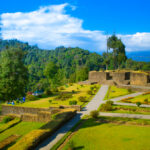 01Top 5 Best Places Visiting in Gyalshing – Monasteries, Lakes & Scenic Escapes
01Top 5 Best Places Visiting in Gyalshing – Monasteries, Lakes & Scenic Escapes -
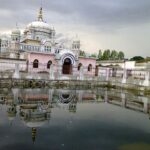 02Top 5 Best Places Visiting in Panna – Temples, Waterfalls & Wildlife Escapes
02Top 5 Best Places Visiting in Panna – Temples, Waterfalls & Wildlife Escapes -
 03Top 5 Best Places to Visit in Malerkotla – Malerkotla Fort, Sheesh Mahal & More
03Top 5 Best Places to Visit in Malerkotla – Malerkotla Fort, Sheesh Mahal & More -
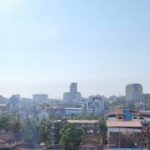 04Top 10 Best Places Visiting in Dakshina Kannad for Culture, Nature & Coastal Charm
04Top 10 Best Places Visiting in Dakshina Kannad for Culture, Nature & Coastal Charm -
 05Best Places Visiting in Narmadapuram – Temples, Waterfalls & Wildlife Escapes
05Best Places Visiting in Narmadapuram – Temples, Waterfalls & Wildlife Escapes -
 06Best Places Visiting in Shopian – Explore Top Attractions & Hidden Gems
06Best Places Visiting in Shopian – Explore Top Attractions & Hidden Gems -
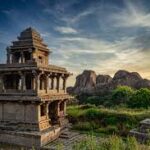 07Top 2 Best Places Visiting in Chitradurga for History, Nature & Adventure
07Top 2 Best Places Visiting in Chitradurga for History, Nature & Adventure













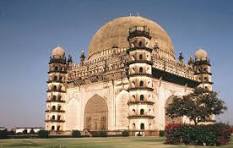
Pingback: Top 5 Best Places Visiting in Vijayapura – Monuments, Forts & Historical Sites